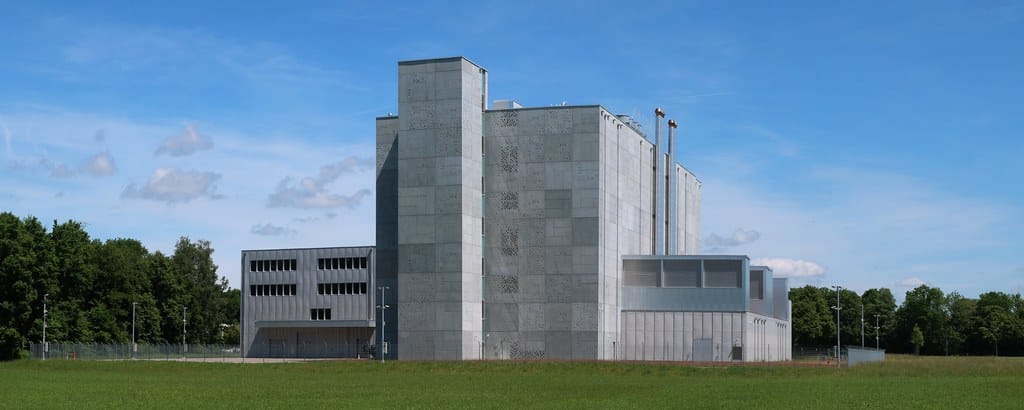Hyundai Teams Up with Texas for Revolutionary Nuclear-Powered Datacenter Project
In a groundbreaking move that could reshape both the energy and technology sectors, South Korean industrial giant Hyundai has announced plans to help construct a nuclear-powered datacenter facility in Texas, marking a significant milestone in the intersection of clean energy and digital infrastructure.
A Historic Partnership for Digital Infrastructure
The ambitious project represents one of the first major commercial applications of small modular reactors (SMRs) specifically designed to power large-scale datacenter operations. Hyundai Engineering & Construction, the company's infrastructure arm, will collaborate with Texas-based energy developers to create a facility that could serve as a blueprint for the future of sustainable computing infrastructure.
This announcement comes at a crucial time when datacenters consume approximately 1% of global electricity demand, with usage expected to double by 2030 according to the International Energy Agency. The partnership addresses growing concerns about the environmental impact of cloud computing and artificial intelligence operations, which require massive amounts of consistent, reliable power.
Why Texas Makes Strategic Sense
Texas emerges as the ideal location for this pioneering project due to several key factors. The state already hosts more than 40% of all U.S. datacenter capacity and maintains a business-friendly regulatory environment that encourages energy innovation. Additionally, Texas has existing nuclear infrastructure and experienced regulatory frameworks that can accommodate advanced reactor technologies.
The Lone Star State's independent power grid, operated by ERCOT (Electric Reliability Council of Texas), provides the flexibility needed for integrating new nuclear technologies without navigating complex interstate regulatory challenges. This autonomy has previously enabled Texas to lead in renewable energy adoption, and now positions it to pioneer nuclear-powered digital infrastructure.
Small Modular Reactors: The Game-Changing Technology
Unlike traditional nuclear power plants that can take decades to build and cost billions of dollars, SMRs offer a more practical solution for dedicated applications. These reactors, typically generating 50-300 megawatts of power, can be manufactured in factories and assembled on-site, significantly reducing construction time and costs.
For datacenter applications, SMRs provide several distinct advantages:
- Consistent baseload power: Unlike solar or wind, nuclear power provides 24/7 reliable energy output
- Carbon-free operations: Nuclear energy produces no greenhouse gas emissions during operation
- Scalable capacity: Multiple SMR units can be added as datacenter demand grows
- Enhanced security: On-site power generation reduces vulnerability to grid disruptions
Industry Implications and Market Response
The announcement has garnered significant attention from both technology and energy sector analysts. Major cloud computing companies including Microsoft, Google, and Amazon have already begun exploring nuclear power options for their datacenter operations, recognizing the need for carbon-neutral, reliable energy sources.
Microsoft recently signed a 20-year agreement to purchase power from the Three Mile Island nuclear plant, while Google announced investments in multiple SMR projects. These moves signal a broader industry shift toward nuclear-powered digital infrastructure.
The global datacenter market, valued at approximately $250 billion in 2023, is projected to reach $622 billion by 2030. As artificial intelligence and machine learning applications continue expanding, the demand for sustainable, high-capacity computing facilities will only intensify.
Regulatory and Safety Considerations
The project must navigate the Nuclear Regulatory Commission's approval process for SMR technology, which has been streamlined in recent years but still requires extensive safety reviews. Hyundai's involvement brings valuable expertise from South Korea's advanced nuclear industry, where the company has successfully delivered multiple nuclear projects.
Safety protocols for nuclear-powered datacenters will likely set new industry standards, incorporating both cybersecurity measures for digital operations and nuclear safety requirements. This dual-focus approach could establish Texas as a center of excellence for secure, sustainable digital infrastructure.
Looking Ahead: A New Era of Sustainable Computing
The Hyundai-Texas nuclear datacenter partnership represents more than just an innovative energy solution—it signals a fundamental shift in how we approach digital infrastructure sustainability. As global demand for computing power continues accelerating, traditional grid-based power solutions may prove inadequate for meeting both capacity and environmental requirements.
This project could catalyze similar developments across the United States and internationally, potentially establishing nuclear-powered datacenters as the gold standard for sustainable, high-performance computing infrastructure. For Texas, it reinforces the state's position as a leader in energy innovation while attracting significant technology sector investment.
The success or failure of this pioneering venture will likely influence the trajectory of both nuclear energy adoption and datacenter development strategies for years to come.
